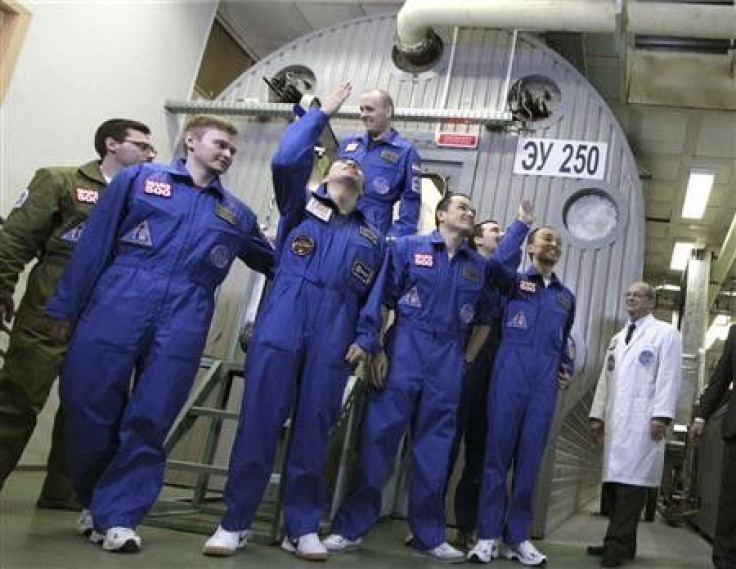Mars crew lands after 520 days in isolation

Pale-faced but smiling, the crew of a long-duration isolation study emerged bleary-eyed to daylight and applause Friday after 520 days locked away in windowless, cramped cells to simulate the length of a journey to Mars.
The $15 million Mars500 experiment aims to answer one of the big unknowns of deep-space travel: can people stay healthy and sane during six months rocketing to the Red Planet?
The six male volunteers were allowed to briefly embrace family and friends before being ushered into a three-day quarantine period at the end of an experiment to recreate the psychological strain of a real Mars mission as closely as possible.
Clothed in blue jumpsuits, the would-be astronauts from Europe, Russia and China grinned and waved as the heavy metal door was shut on their home of the last 17 months in a mock spaceship at a Moscow research institute.
It's really, really great to see you all again, rather heartwarming, said Diego Urbina, an Italian-Colombian participant, who was shaky and red-eyed.
On this mission we've achieved the longest isolation ever so that humankind can go to a distant but reachable planet.
Psychologists fear a return to the noise and activity of ordinary life will come as a shock to the men.
Time seems to have flown by since we closed the hatch last year. But how time really felt to the crew we'll soon know. Probably we'll have a very big difference of opinion, said Igor Ushakov, head of the Russian Institute for Biomedical Problems, which runs the spaceship.
The crew were firmly anchored by gravity, despite the pretence of long months shuttling through space. But that did not stop them from feeling thousands of miles from home.
I really felt a physical distance between our crew and the people in Mission Control. My reason knows that they're just 20 m (65 ft) away from us but my mind can't accept it, Frenchman Romain Charles wrote to Reuters on the eve of his return.
The men have fed on rations like those of real astronauts, rarely showered, taken daily urine and blood samples all while under 24-hour surveillance everywhere but in the toilets, earning the study comparisons to a reality TV show.
MARS500 EXPERIMENTS
More than 100 different experiments crowded in on the Mars500 project, with researchers of every stripe interested in scrutinizing the men. Halfway through, three crew members even donned 32-kg (70-pound) spacesuits to clomp about in a dark, sand-filled room, imitating the surface of Mars.
They are tired, of course they need social rehabilitation to adapt back to society, project director Boris Morukov told Reuters.
Over a period of 17 months, everything was strictly regimented. Now they are returning to a life where they must deal with family and professional problems.
A 420-day experiment in 2000 ended in drunken disaster when two participants got into a fistfight and a third tried to forcibly kiss a female crew member.
Mars500, the first fully-fledged simulation, brings a warm rush of publicity to space programs, struggling against waning interest among tax payers.
It's amazing how much interest there has been, veteran European astronaut Christer Fuglesang told Reuters.
Space officials say technology is still decades away from being able to protect astronauts from cancer-causing cosmic radiation, land them at least 35 million miles (56 million km) across the solar system and bring them home again.
But Charles said flying to Mars is the next logical step for human expansion.
If any catastrophic threat is targeting the Earth, we should be able to seek a safe haven in another celestial body.
© Copyright Thomson Reuters 2024. All rights reserved.











